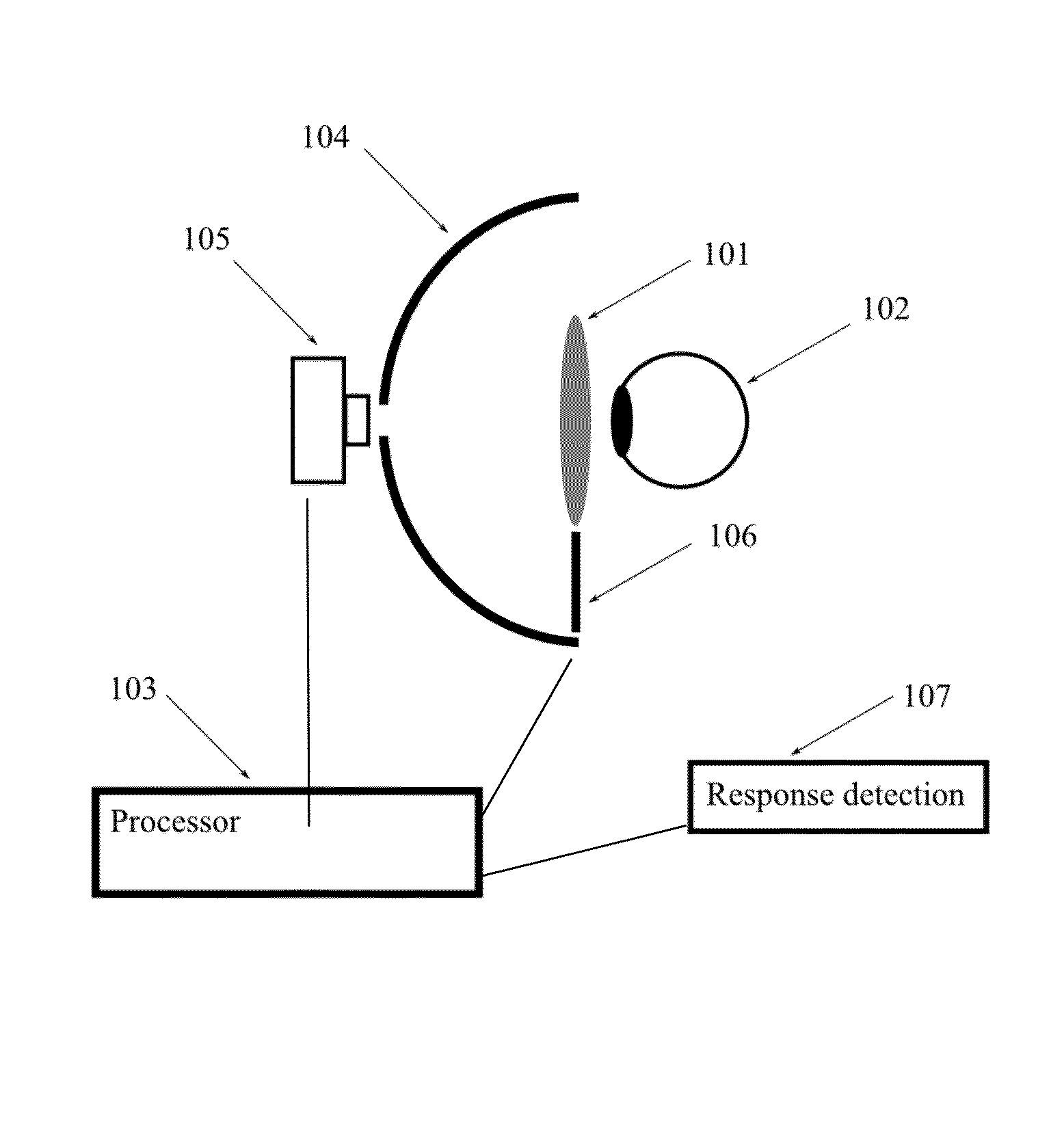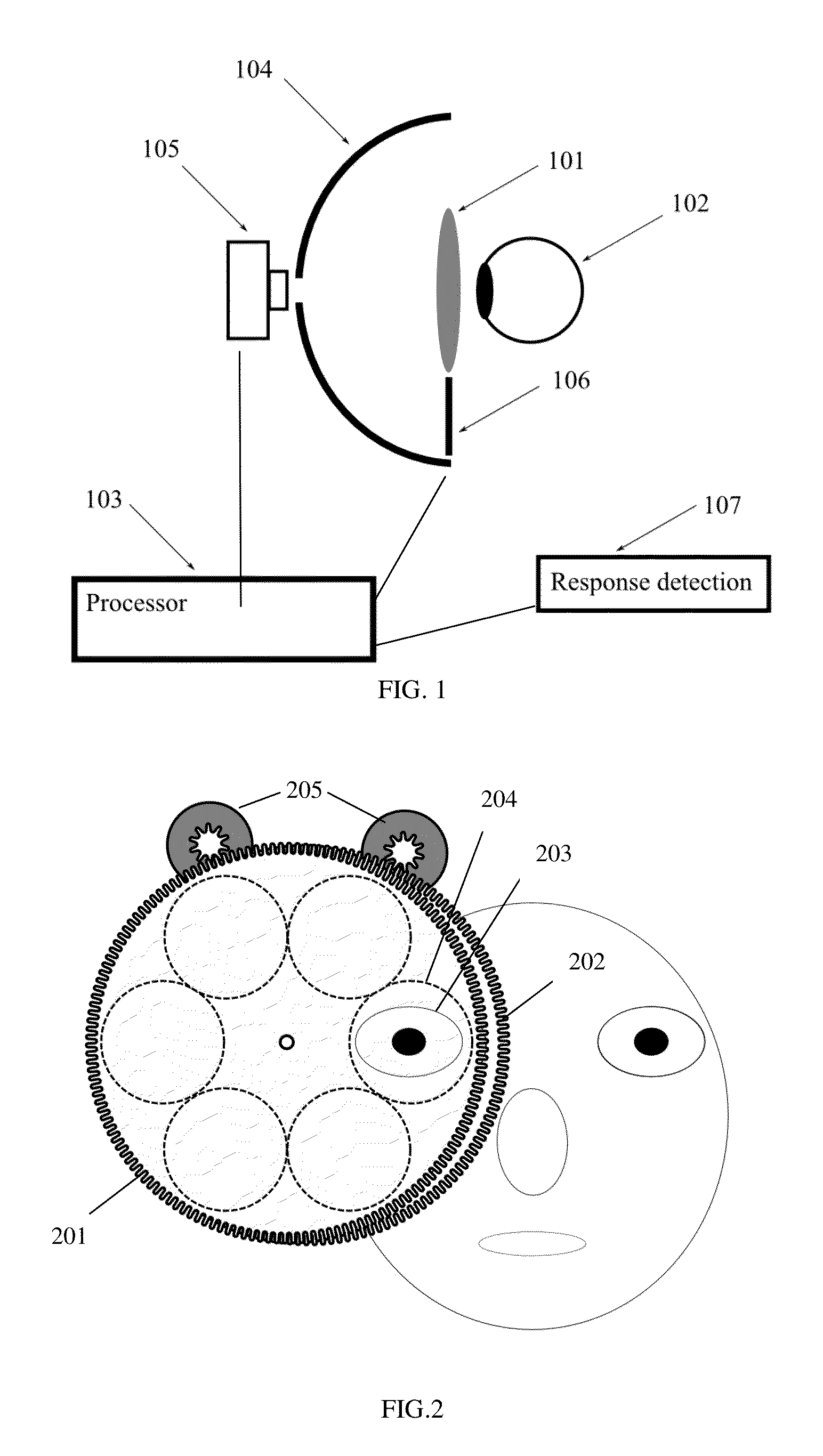Systems and methods for refractive correction in visual field testing
a technology of visual field and refractive correction, applied in the field of visual field testing, can solve the problems of reducing the reliability of visual field test, providing cumbersome and time-consuming methods for reducing refractive blur, and general depression of visual field
- Summary
- Abstract
- Description
- Claims
- Application Information
AI Technical Summary
Benefits of technology
Problems solved by technology
Method used
Image
Examples
second embodiment
[0018]In the lens system illustrated in FIG. 3, a liquid lens is utilized to provide a variable refractive correction. A liquid lens typically consists of one or two transparent and flexible membranes 301 and 302, encapsulating a volume of liquid 303 with a specific refractive index. A variety of liquid lenses have been described in the literature. Continuously adjustable refractive positive or negative powers of up to 25-50 diopters have been demonstrated [see for example http: / / www.holochip.com and Ren et. al “Variable-focus liquid lens by changing aperture” Applied Physics Letters 86:21107 2005 hereby incorporated by reference]. An actuator changes the distribution of the volume of the liquid, to adjust the refractive power of the lens as shown pictorially in FIGS. 3(b) and 3(c) creating convex and concave lenses respectively. In this case pressure is applied or released to the periphery of the lens as indicated by arrows 304 and 305. The volume change can be accomplished either ...
third embodiment
[0019]In a variable lens system two or more transmissive plates of different shapes are translated perpendicular to the optical axis or rotated around the axis to produce a change in refractive power. One example of such a system is an Alvarez lens system. This lens system, invented by Luis W. Alvarez in the 1960s (see U.S. Pat. No. 3,305,294 hereby incorporated by reference) and illustrated in FIG. 4, consists of two transmissive plates 401 and 402, where each plate has a flat surface and a surface shaped in a specific two-dimensional polynomial shape. Parallel translation of the two plates relative to each other produces a change in refractive power, e.g., spherical and / or cylindrical as illustrated in FIGS. 4(a) and (b). Various embodiments of lens systems incorporating the general principle of shifting or rotating transmissive plates relative to each other to create variations in spherical and cylindrical power would be known by those skilled in the art. Instead of or in additio...
PUM
 Login to View More
Login to View More Abstract
Description
Claims
Application Information
 Login to View More
Login to View More - R&D
- Intellectual Property
- Life Sciences
- Materials
- Tech Scout
- Unparalleled Data Quality
- Higher Quality Content
- 60% Fewer Hallucinations
Browse by: Latest US Patents, China's latest patents, Technical Efficacy Thesaurus, Application Domain, Technology Topic, Popular Technical Reports.
© 2025 PatSnap. All rights reserved.Legal|Privacy policy|Modern Slavery Act Transparency Statement|Sitemap|About US| Contact US: help@patsnap.com



